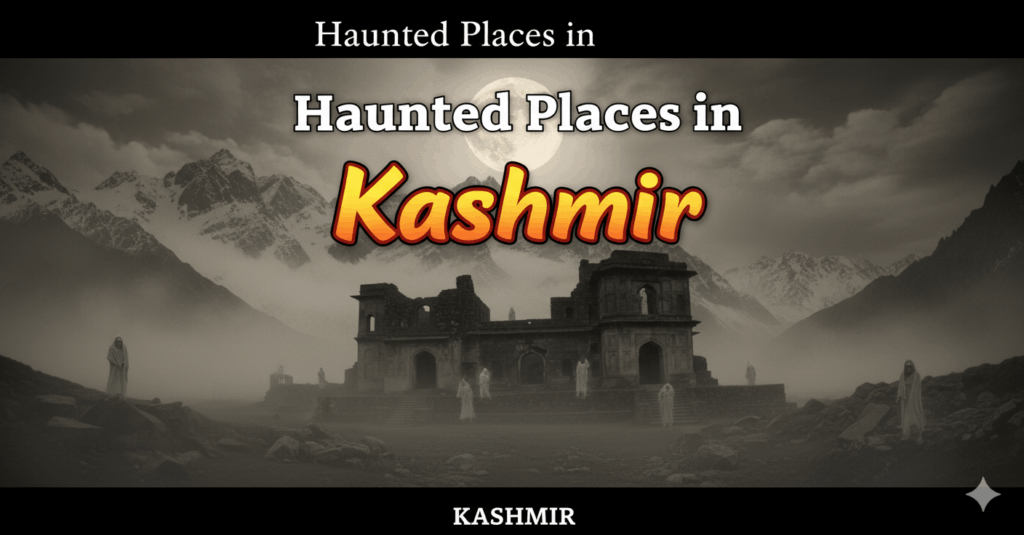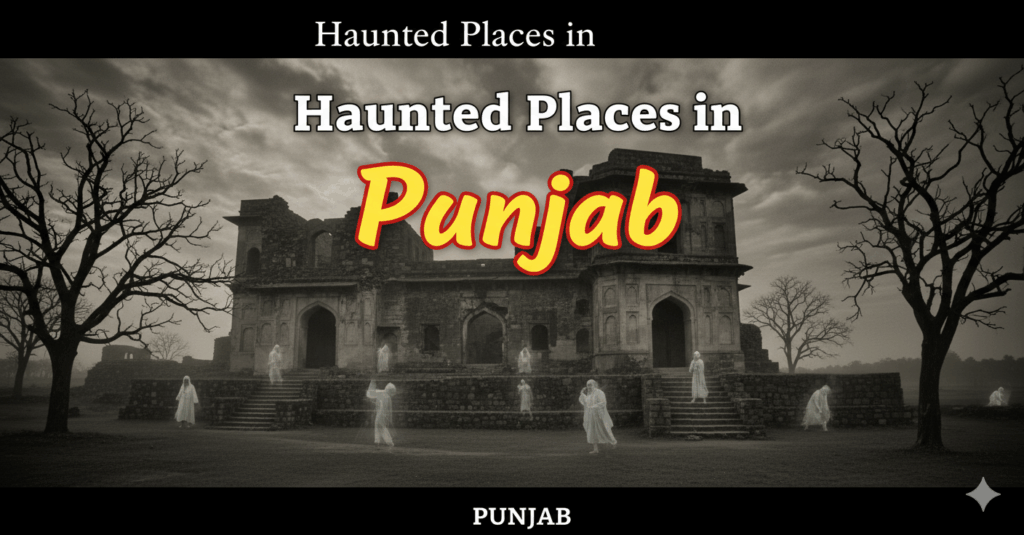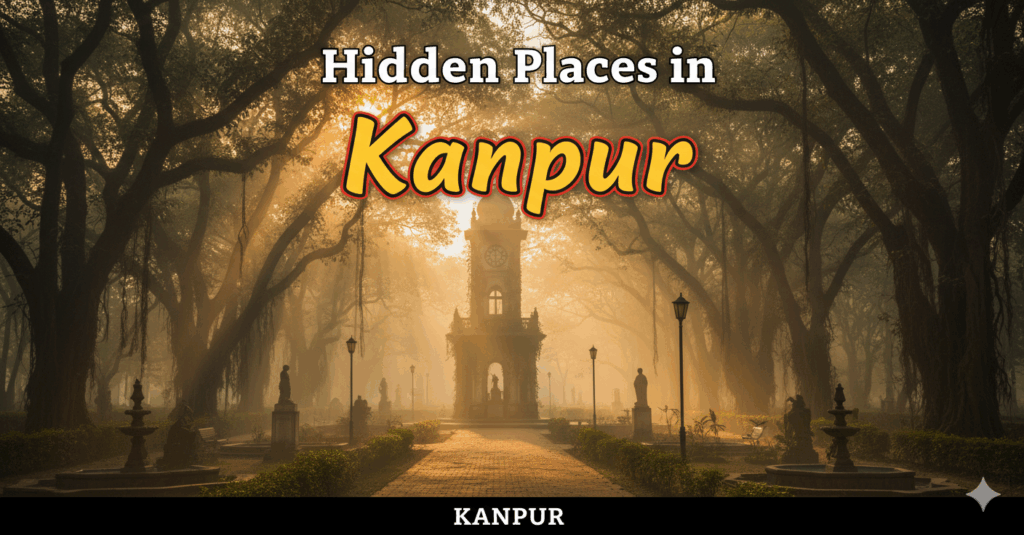Sri Lanka, the teardrop-shaped island nation south of India, holds profound significance in Hindu mythology as the legendary “Lanka” mentioned in the Ramayana. For devotees and history enthusiasts, exploring the places to visit in Sri Lanka related to Ramayana offers a unique spiritual journey that transcends time and connects myth with reality.
This comprehensive guide will take you through the most significant Ramayana places in Sri Lanka, detailing their mythological connections, historical importance, and practical information for travelers. Whether you’re seeking a spiritual pilgrimage or exploring ancient legends, the Ramayana trail in Sri Lanka promises an enlightening experience.
Table of Contents
Historical Significance of Ramayana in Sri Lankan Culture
Before exploring specific places to visit in Sri Lanka related to Ramayana, it’s crucial to understand the deep connection between this ancient epic and Sri Lankan culture. Archaeological findings across the island support many aspects of the Ramayana, suggesting historical foundations beyond mere mythology. Ancient rock inscriptions, temple carvings, and preserved folk traditions point to the enduring legacy of this epic in Sri Lanka.
Top 11 Places to Visit in Sri Lanka Related to Ramayana
From ancient gardens where Sita was held captive to caves where Ravana plotted his strategies, Sri Lanka is dotted with sites that bring the Ramayana epic to life. Each of these 11 sacred Ramayana places to visit in Sri Lanka offers a unique glimpse into the mythological narrative while showcasing the island’s stunning natural beauty and cultural heritage.
| Location | Region | Significance |
|---|---|---|
| Ashok Vatika (Hakgala Gardens) | Nuwara Eliya | Where Sita was held captive and first met Hanuman |
| Sita Amman Temple | Nuwara Eliya | Sacred spot where Sita performed daily prayers |
| Ravana’s Cave (Ella) | Ella | One of Ravana’s strategic hideouts for Sita |
| Ravana Falls | Ella | Where Sita found solace and bathed during captivity |
| Divurumpola Temple | Welimada | Site of Sita’s purity test after rescue |
| Rumassala Mountain | Galle | Fragment of Hanuman’s Sanjeevani mountain |
| Kanniya Hot Springs | Trincomalee | Sacred springs created by Ravana’s sword |
| Thotupola Kanda | Horton Plains | Hanuman’s first landing point in Lanka |
| Munneswaram Temple | Chilaw | Where Rama cleansed himself after battle |
| Ussangoda | Hambantota | Ravana’s airport for the flying chariot |
| Laggala | Central Province | Site of Ravana’s main palace complex |
1. Ashok Vatika (Hakgala Botanical Gardens)

The Ashok Vatika Sri Lanka location is believed to be at the Hakgala Botanical Gardens, where Ravana kept Sita after her abduction. This is where Hanuman first met Sita and delivered Lord Rama’s ring as proof of his identity. The gardens now house over 10,000 plant species, many mentioned in the Ramayana, creating a serene atmosphere that contrasts with the tumultuous events that allegedly took place here.
Location: Near Nuwara Eliya
Significance: The legendary garden where Sita was held captive
Best Time to Visit: Early morning for mist-covered gardens and cooler temperatures
2. Sita Amman Temple
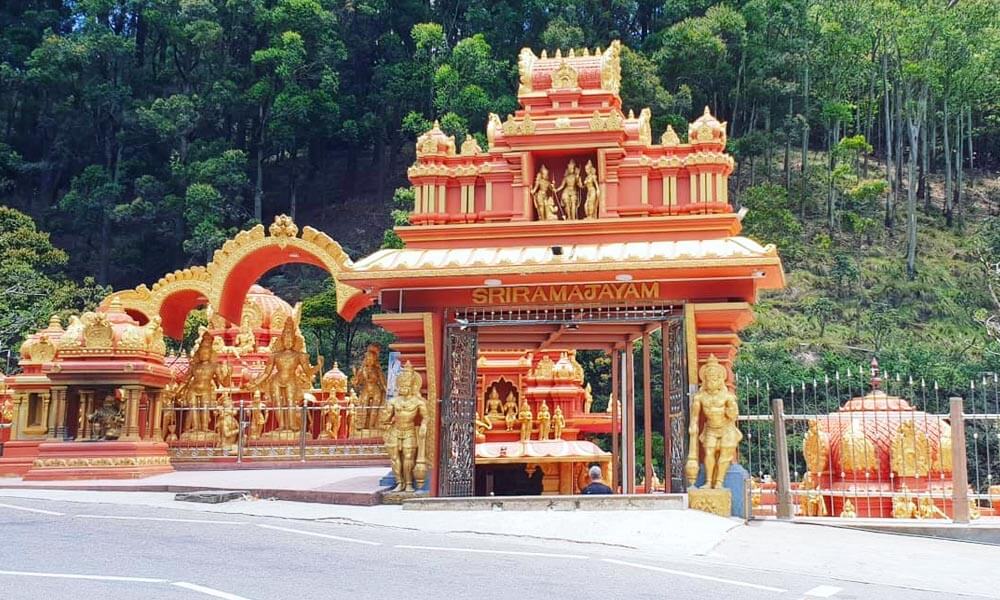
This colorful Hindu temple marks the exact spot where Sita performed daily prayers during her captivity, making it one of the most sacred sites on the Ramayana trail. Archaeological excavations have unearthed artifacts potentially dating back to the Ramayana period. The vibrant architecture features traditional South Indian design with intricate carvings and colorful murals depicting scenes from Sita’s life.
Location: Near Hakgala Gardens, Nuwara Eliya
Significance: The only temple dedicated to Goddess Sita in Sri Lanka
Special Feature: Archaeological artifacts from the Ramayana period on display
3. Ravana’s Cave (Ravana Ella Cave)

This cave requires a moderate hike but offers breathtaking views and represents one of the most authentic Ramayana places in Sri Lanka. From the mouth of the cave, visitors can enjoy stunning panoramic views of the surrounding landscape, including the cascading Ravana Falls below. The cave system extends deep into the mountainside with multiple chambers that local guides believe were used by Ravana to hide Sita.
Location: Behind Ravana Falls, Ella
Significance: One of Ravana’s hiding places for Sita
Trek Duration: 20-30 minute moderate hike from the main road
4. Ravana Falls (Ravana Ella)
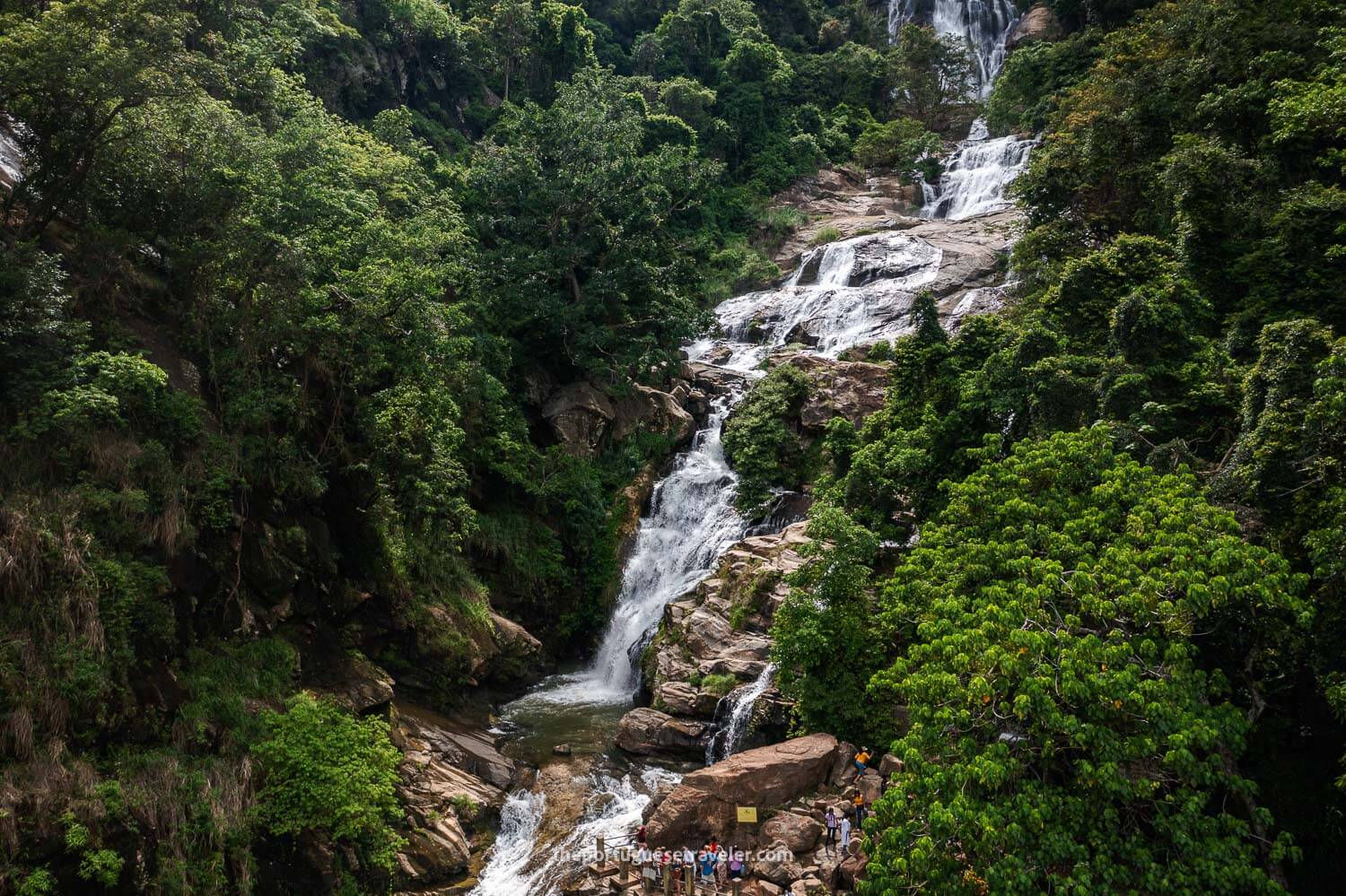
Named after King Ravana, this 25-meter waterfall is one of Sri Lanka’s widest and most spectacular cascades. According to legend, Sita bathed in the pool formed by these falls during her captivity, finding solace in the natural beauty. The area surrounding the falls features several natural caves, and during morning hours, sunlight creates beautiful rainbows in the mist, adding to the magical atmosphere.
Location: 6 km from Ella town
Significance: Where Sita bathed during captivity
Special Feature: Rainbow formations in the mist during morning hours
5. Divurumpola Temple

Meaning “place of oath” in Sinhalese, this temple marks where Sita proved her purity after rescue, making it an essential stop on any Sri Lanka Ramayana tour. The temple is modest in structure but powerful in spiritual energy, with the main shrine housing deities of Rama, Sita, and Lakshmana. The atmosphere is one of quiet reverence, with pilgrims often seen in deep meditation performing purification rituals.
Location: Nuwara Eliya – Welimada Road
Significance: Site of Sita’s Agni Pariksha (test by fire)
Annual Festival: Major celebration held in July/August with thousands of pilgrims
6. Rumassala Mountain (Sanjeevani Hill)
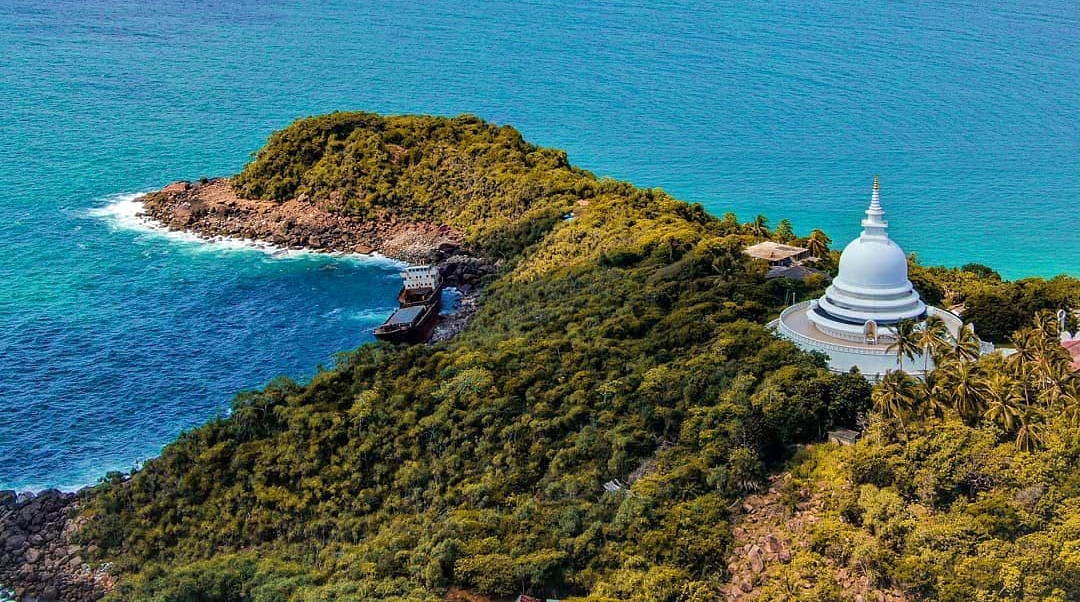
When Hanuman couldn’t identify the Sanjeevani herb needed to save Lakshmana, he carried an entire mountain from the Himalayas. A chunk allegedly fell near Galle, creating Rumassala, the famous Sanjeevani Mountain in Sri Lanka. The peak offers panoramic ocean views and houses a Japanese Peace Pagoda. Botanists have identified several Himalayan medicinal plants growing on Rumassala, lending credibility to the legendary connection.
Location: Near Unawatuna Beach, Galle
Significance: Fragment of the Sanjeevani Mountain in Sri Lanka
Unique Feature: Himalayan medicinal plants still found growing on the hill
7. Kanniya Hot Springs
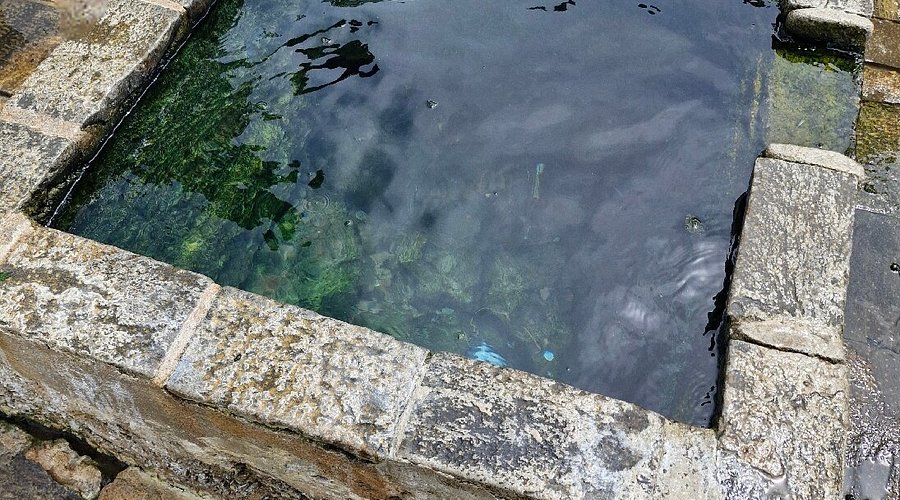
These seven natural hot springs emerged when Ravana struck the ground with his sword in anger after his mother’s death, using them for her funeral rites according to local legend. Each well maintains different temperatures, with the waters believed to possess healing properties for skin conditions and rheumatic ailments. Archaeological excavations have uncovered ancient structures suggesting the site has held cultural significance for centuries.
Location: Near Trincomalee
Significance: Springs created by Ravana’s sword
Healing Properties: Seven wells with different temperatures for therapeutic bathing
8. Thotupola Kanda (Landing Place)
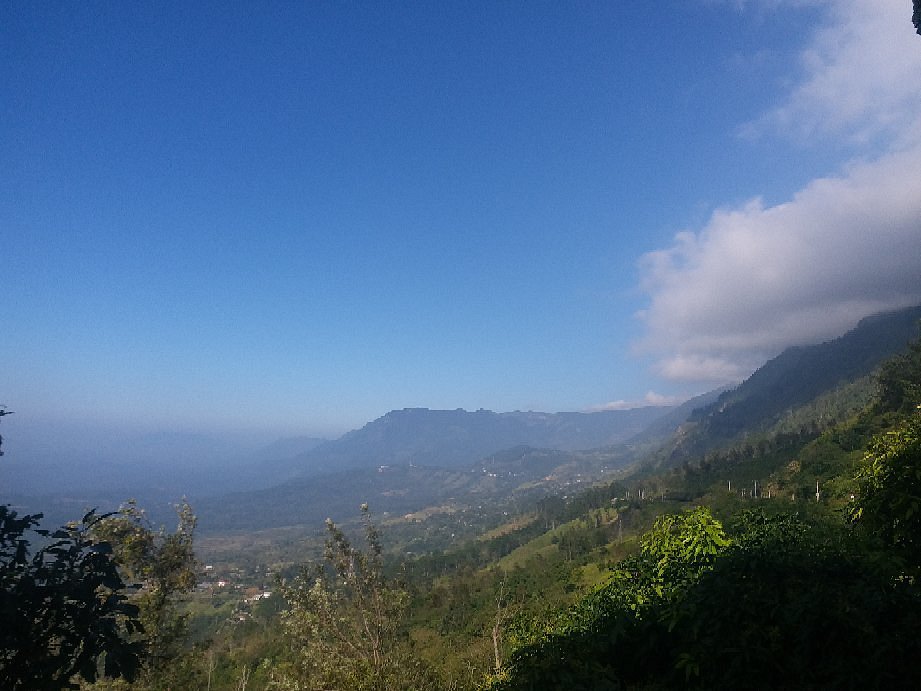
This elevated area in Horton Plains National Park features unusual rock formations resembling monkey footprints, reinforcing Hanuman’s connection to the Ramayana trail. The site offers breathtaking mountain and valley views, making it strategically important for surveying the land. The rock formations are geologically unique, with natural indentations that local guides interpret as evidence of Hanuman’s powerful landing.
Location: Horton Plains National Park
Significance: Hanuman’s first landing spot in Lanka
Best Viewing Time: Early morning before mist covers the plains
9. Munneswaram Temple
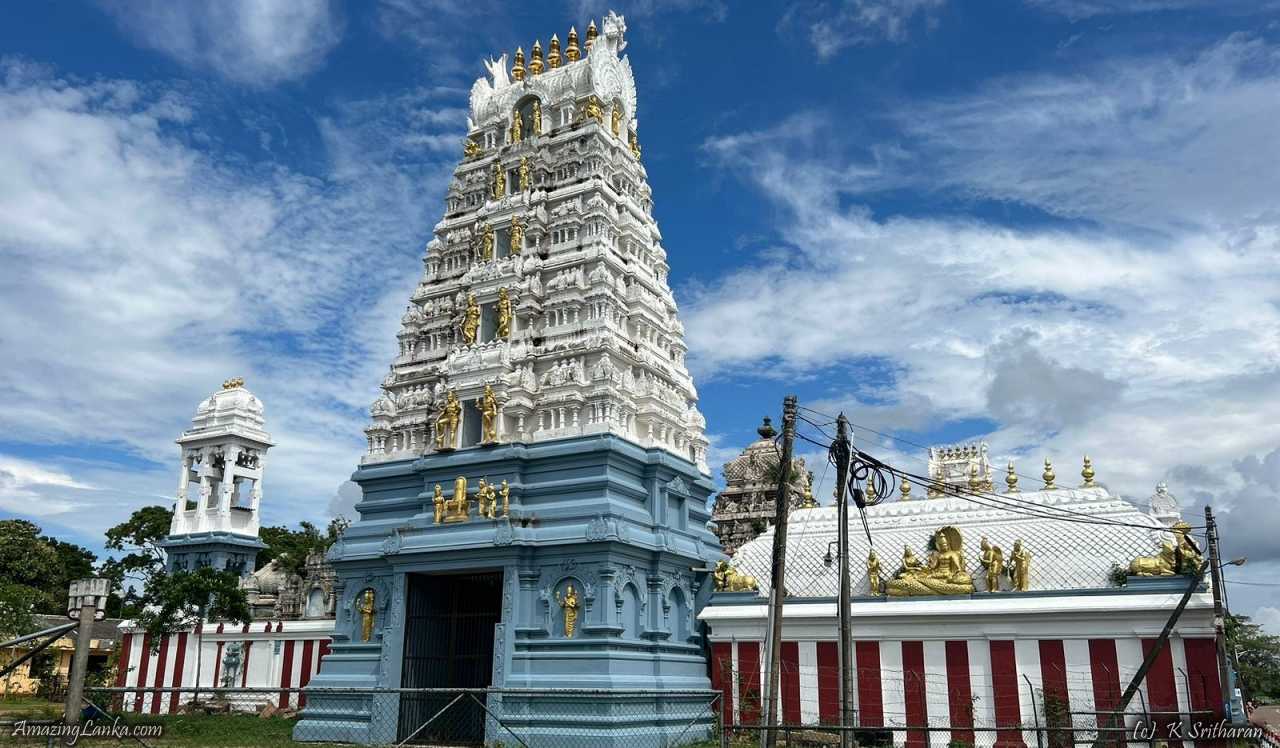
This ancient Shiva temple is believed to be over 1,000 years old, making it one of the most historically significant Ramayana places in Sri Lanka. According to local tradition, Lord Rama prayed here to cleanse himself after killing Ravana, who despite his evil deeds was still a learned Brahmin. The temple follows classic Dravidian architecture with intricate carvings depicting Ramayana scenes and hosts spectacular fire-walking ceremonies during annual festivals.
Location: Near Chilaw
Significance: Where Rama prayed after killing Ravana
Architecture: Classic Dravidian style with intricate Ramayana carvings on gopuram
10. Ussangoda (Ravana’s Airport)

This flat, reddish terrain near Hambantota contrasts sharply with surrounding landscapes, creating an otherworldly appearance perfect for an ancient airport where Ravana’s flying chariot allegedly landed. The unusual soil composition prevents vegetation growth due to high metal content. For Ramayana enthusiasts, the site represents tangible evidence of advanced ancient aviation described in the epic, with the plateau’s edge offering breathtaking coastal views.
Location: Near Hambantota
Significance: Landing site for Ravana’s flying chariot
Geological Wonder: High metal content in soil prevents vegetation growth
11. Laggala (Lanka Giri Pura)
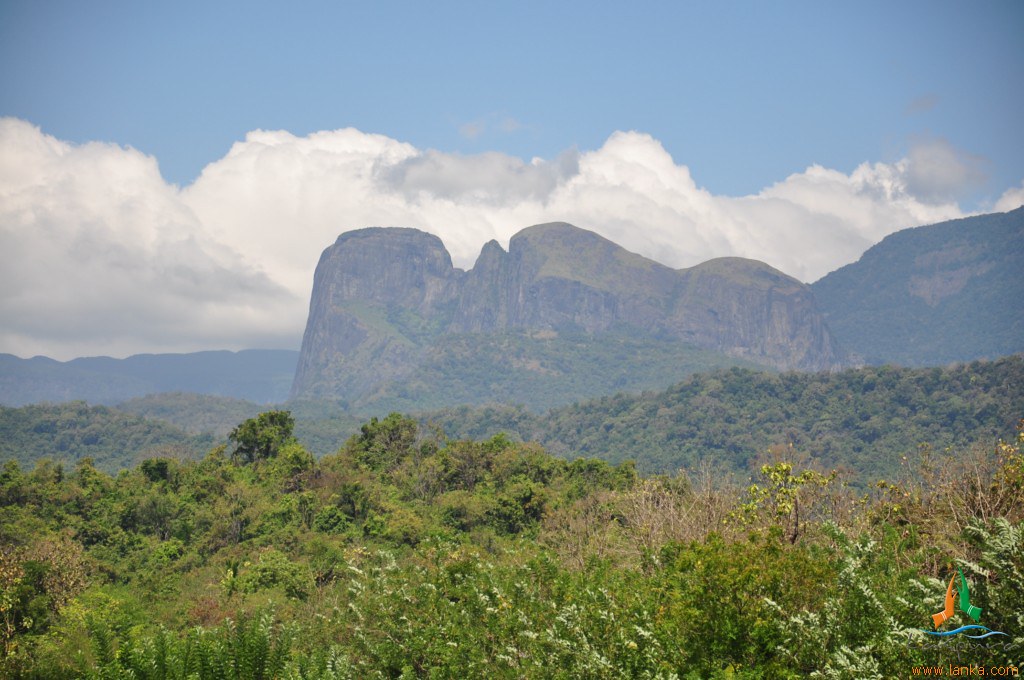
This mountainous area features unusual rock formations and caves associated with Ravana’s kingdom, making it essential for those interested in places to visit in Sri Lanka related to Ramayana. Archaeological excavations have uncovered ancient structures, though definitively linking them to the Ramayana period remains challenging. The landscape offers natural fortifications and commanding valley views, explaining why it might have been chosen as a royal stronghold.
Location: Central Province, near Dambulla
Significance: Site of Ravana’s main palace
Access Requirements: Four-wheel drive vehicle recommended for rough terrain
Planning Your Ramayana Trail Journey
Transforming your spiritual aspirations into a well-organized pilgrimage requires thoughtful preparation and strategic planning. These essential guidelines will help you navigate the Ramayana trail efficiently while maximizing your sacred experiences at each legendary site.
Best Time to Visit
- December to March: Ideal for central highlands (Nuwara Eliya, Ella)
- April to September: Better for coastal sites (Rumassala, Ussangoda)
The complete Ramayana trail can be covered in 7-10 days, depending on your pace and desired depth of experience at each location.
Transportation Options
- Private Car with Driver: Most convenient for remote sites
- Public Transport: Budget-friendly but time-consuming
- Organized Tours: Hassle-free with expert guidance
Best Ramayana Tour Packages
Choosing the right tour package can significantly enhance your spiritual journey while ensuring comfort and comprehensive coverage of all sacred sites. Professional tour operators offer specialized Ramayana tour package Sri Lanka options designed specifically for pilgrims and spiritual travelers.
For travelers seeking comprehensive experiences, specialized Ramayana tour package Sri Lanka options are available. These packages typically include:
- Guided Tours: Expert commentary on mythological significance
- Comfortable Transportation: Air-conditioned vehicles with experienced drivers
- Accommodation: Strategic locations for easy access to multiple sites
- Cultural Experiences: Traditional performances and local cuisine
Popular Sri Lanka Ramayana tour packages often combine sacred sites with cultural attractions, beaches, and wildlife experiences. For international travelers, international tour packages from Mumbai offer convenient starting points for these spiritual journeys.
Practical Tips for Your Sacred Journey
Successful pilgrimage experiences depend on proper preparation and cultural awareness. These practical guidelines ensure respectful engagement with sacred sites while maximizing your spiritual connection to the Ramayana epic throughout Sri Lanka.
Cultural Sensitivity
Respecting local customs and religious traditions enhances both your experience and the preservation of these sacred sites for future pilgrims.
- Dress Code: Modest attire with shoulders and knees covered at temples
- Footwear: Remove shoes before entering religious sites
- Photography: Respect worshippers’ privacy
Essential Preparations
Proper documentation and health preparations ensure smooth travel and peace of mind during your spiritual journey.
- Documentation: Carry passport and necessary permits
- Health: Consult your doctor about vaccinations
- Currency: Sri Lankan Rupees (LKR) for local expenses
- Language: English widely spoken; basic Sinhala phrases helpful
Booking Considerations
Strategic booking decisions can significantly impact your overall pilgrimage experience and budget management.
When planning your trip, consider Sri Lanka tour packages from Mumbai for comprehensive arrangements. These packages often include visa assistance, which you can also arrange through visa services in Mumbai.
For convenient travel arrangements, online flight booking in Mumbai services can help secure the best rates for your journey.
If you’re interested in exploring other spiritual destinations, Kerala tour packages from Mumbai offer additional pilgrimage opportunities in South India.
Conclusion
The Ramayana trail in Sri Lanka offers an extraordinary journey through myth, history, and natural beauty, providing devotees and travelers with a tangible connection to one of Hinduism’s greatest epics. From the mist-covered Ashok Vatika Sri Lanka location to the mysterious Sanjeevani Mountain in Sri Lanka, these places to visit in Sri Lanka related to Ramayana promise spiritual enrichment and unforgettable memories.
For expertly planned Sri Lanka Ramayana tour exploration and comprehensive spiritual discovery, choose itineraries that maximize mythological experiences while respecting local traditions and cultural practices. Visit us at VDP Travels, Neighbourhood Complex, F- 5, near SBI Bank, Sector 4, Nerul, Navi Mumbai, Mumbai, Maharashtra 400706. For detailed Ramayana tour package Sri Lanka with knowledgeable guides and complete sacred site exploration, call +91 99675 18405, or contact VDP Travels.
Places to Visit in Sri Lanka Related to Ramayana – FAQs
How many days are needed to cover all Ramayana sites in Sri Lanka?
7-10 days are sufficient to visit all major sites comfortably with proper planning.
Which is the best time to visit Ramayana places in Sri Lanka?
December to March for hill country sites, April to September for coastal locations.
Are these Ramayana sites suitable for children and elderly visitors?
Most sites are accessible, though some like Ravana’s Cave require moderate hiking.
Can I visit these places during monsoon season?
Yes, but dry seasons offer better weather and road conditions for easier travel.
Do I need special permits to visit Ramayana sites?
No special permits required, though some locations like Horton Plains need park entry fees.
Are there vegetarian food options available near these sites?
Yes, Sri Lanka offers excellent vegetarian cuisine, especially around religious sites.
Is it better to hire a guide or explore independently?
Local guides provide valuable insights into mythological connections and hidden stories.
What should I wear when visiting temples on the Ramayana trail?
Modest clothing covering shoulders and knees, remove footwear before entering temples.
Are there accommodation options near major Ramayana sites?
Yes, Nuwara Eliya and Ella offer good hotels with easy access to multiple sites.
Can I take photographs at all Ramayana locations?
Photography is generally allowed at outdoor sites, but respect restrictions at temples.


